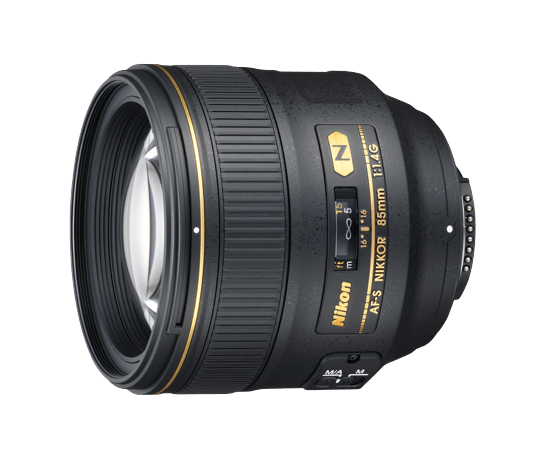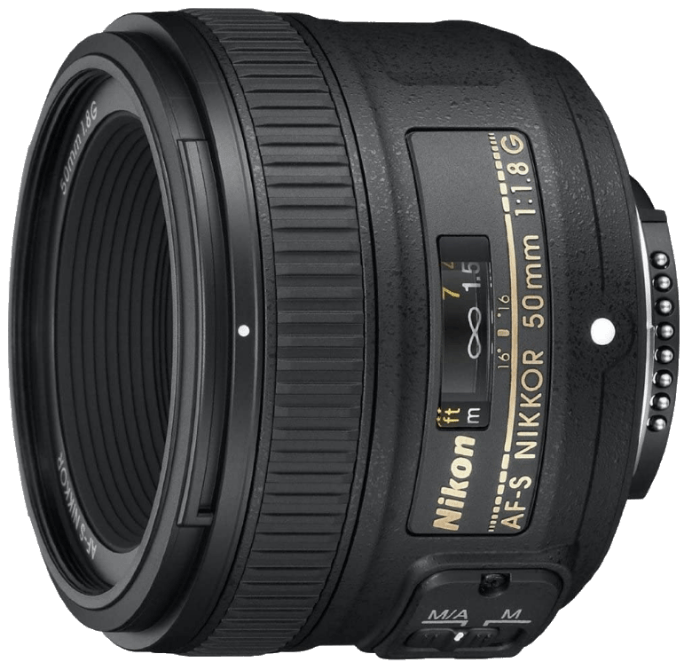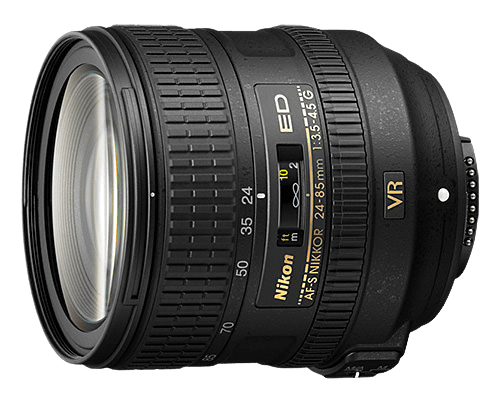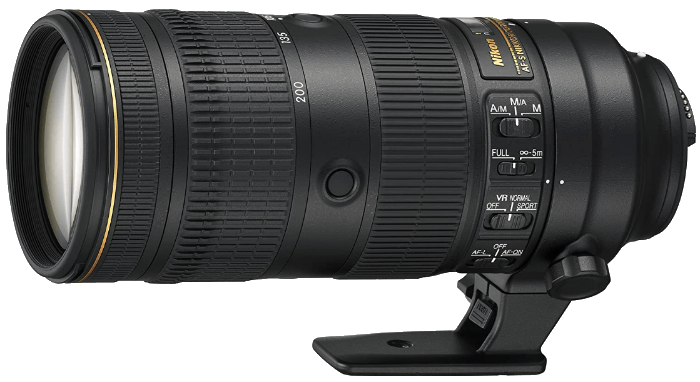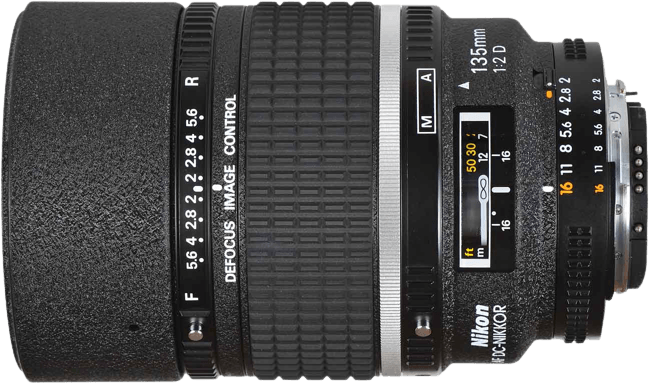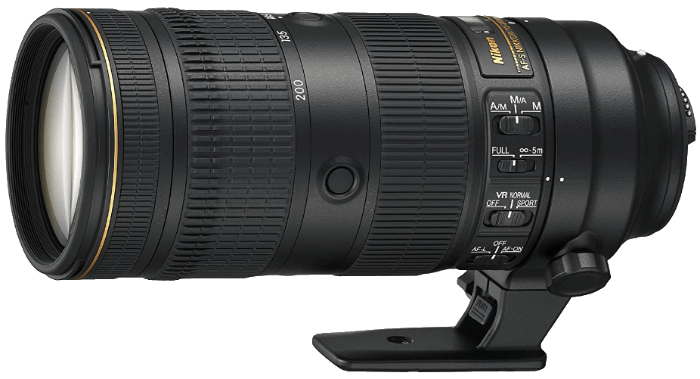Our favorite Nikon lens for portraits is the Nikon AF-S FX 85mm f/1.4. It ticks all our boxes and easily creates amazing portraits. The f/1.4 aperture is beautiful, allowing you to really separate your subject from the background with beautiful bokeh.
What is the Best Nikon Portrait Lens?
Before we get into more detail, here is a quick roundup of our favorite Nikon portrait lenses. Read on to find out even more about each lens and why we picked them for portraiture.
Best Nikon Lens for Portraits
The Nikon AF-S 85mm f/1.4G is the best Nikon lens for portraits for many reasons. For one, it’s the ideal focal length. It allows you to take tight shots of the face without visible distortion. It also allows you to be far enough from your subject and still achieve intimate results. The 85mm bokeh qualities are what makes it a favorite among portrait photographers. It creates sharp photos even when shooting at its maximum aperture of f/1.4. As a result, it creates a creamy background blur that makes the subject pop. Another benefit of using the 85mm is the fact that it’s not a big lens. That means it’s easy to transport and it doesn’t weigh you down when you’re shooting all day. It’s no wonder it’s the go-to lens of many wedding and event photographers. And for the price, it’s not a bad investment at all. Want to get serious about portraiture but don’t have enough money to buy a professional portrait lens? Well, you can always start with the 50mm f/1.8. What makes this a fantastic option is that it’s cheap. You can get one for about $200 brand new, and less than $100 for a used lens. Another advantage of the Nikon AF-S 50mm f/1.8G is that it’s an all-around lens. You can use it for anything from street photography to portraiture. Its focal length is short enough to get you really close to your subject. But it’s also long enough that it doesn’t have the distortion shorter lenses such as the 35mm or 24mm have. The downside is that it’s plasticky and not weather sealed. So you’ll have to keep it safe from the elements to use it for a long time. And although it doesn’t have the amount of distortion of other lenses, it can still cause some minimal warping. Not used to prime lenses or crave the convenience of a zoom lens? Then the Nikon AF-S 24-85mm f/3.5-4G ED VR is for you. It’s not a kit lens per se—it produces better-quality photos. But at the same time, it feels familiar to most beginners because it’s so easy to use. From another point of view, the 24-85mm is not the best lens for portraits. It has a maximum aperture of f/3.5, which makes it terrible for low-light situations. And it starts at 24mm, which distorts people’s faces. So why is it on our list then? Because it’s affordable at less than $500 brand new and as low as $150 used. It’s also a quality portrait lens if you only shoot between 50 and 85mm. If you don’t have enough money to buy expensive optics, you’ll realize the Nikon 24-85mm is a great choice. Don’t like the fact that you can’t go any lower than 50mm when using the 24-85mm? If you want more flexibility with your portraits, then take a look at the Nikon AF-S 70-200mm f/2.8E lens. The 70-200mm is more expensive than the 50mm or the 24-85mm. But the price is justified because this is one of the best zoom lenses available on the market today. And if it’s way beyond your price range new, you can buy a used one for much less. The 70-200mm is a workhorse. Its zoom function lets you get close to your subject without much distortion. And because it can get up to 200mm, it’s capable of creating creamy bokeh for your portraits. The DC on this Nikon AF DC 135mm f/2D lens stands for Defocus Control, which is a fancy way of saying that it allows you to manipulate bokeh. So if you love background blur, this should be a part of your collection. It’s a one-of-a-kind lens, so it’s mind-boggling that it isn’t more expensive. The Nikon 135 DC has a unique ring that can control the bokeh of either your background or foreground. And you can even manipulate it to soften your main subject if you wish. If you don’t want to use Defocus Control, you can always set it to zero and keep it locked. Once you disable this feature, it becomes an ordinary lens that creates sharp results. People tend to misuse DC a lot because they think it is only for soft-focus images. What they don’t realize is that it’s one of the best Nikon portrait lenses they could ever own.
What to Look for When Choosing a Nikon lens
There are a few crucial elements that you need to consider when you’re looking for the best Nikon portrait lens. Let’s go through each of them to help you decide which option to buy.
Distortion
Most lenses suffer from one type of distortion or another. Even some of the most expensive lenses have it. Ideally, you need to find the best optics with minimal warping. After all, you wouldn’t want your subject’s face to end up looking disfigured.
Sharpness
Every photographer wants their lens to be as sharp as possible. But the reality is that the quality of the optics varies a lot, even if it comes from the same manufacturer. The best way to figure this out is to replace the lenses you’re into, and find out if they’re prone to soft focus.
Bokeh
When shooting portraits, it’s essential to separate your subject from the background. And the best way to do that is to blur whatever is behind them. Each lens produces a distinct background blur (a.k.a. bokeh). In most cases, the fuzzier the background looks, the better the photos it creates. Always look for options that can create that specific effect.
Size/Weight
The size and weight of your portrait lens can affect the way you work. You don’t want it to be too heavy because it can get tiring lugging it around all day. But you also don’t want it too light because it could easily break while you’re working.
Price
In general, portrait lenses are expensive. Most of them cost between a few hundred to several thousand dollars. If you are planning to do professional work, invest in a high-end lens. But it’s okay to buy an affordable lens if you’re starting out and want to dabble in portraiture. We’ll show you different options to help you decide which one you want no matter your budget.
Conclusion
The best portrait lens for Nikon depends on the type of photography you do. If you’re a hobbyist eager to take photos of people, you can start with either the 50mm or the 24-85mm. Once you’re ready to step up your game, you can invest in the 85mm, 70-200mm, or the Nikon 135mm. I would say that the Nikon AF-S FX 85mm f/1.4 is particularly well suited for portraiture. So, if you can’t make up your mind, that’s the lens for you! Before you shell out some money, weigh the pros and cons of each option. That way, you get the most out of whichever best Nikon lens you choose.
